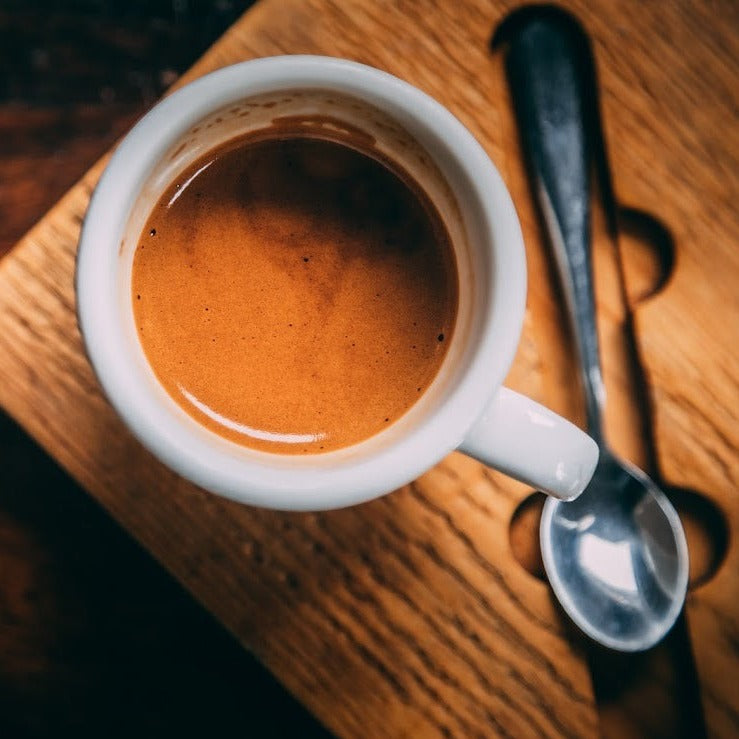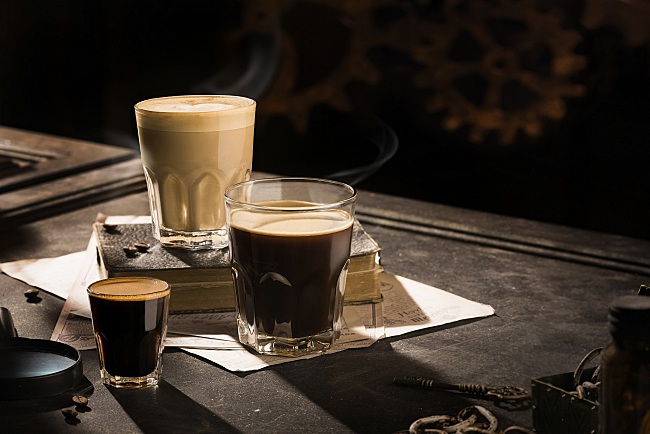Expert Advice to Get the Best Out of SOE Single Origin Espresso
Expert Advice to Get the Best Out of SOE Single Origin Espresso
Blog Article
Coffee Beans 101: Everything You Required to Know About Coffee and Blended Coffee Beans
When it comes to coffee, recognizing the nuances of coffee and combined beans can transform your daily mug. From the growing procedure to roasting methods, every step plays a function in your coffee experience.
Comprehending Coffee Beans: Types and Ranges
When diving right into the world of coffee, comprehending the types and varieties of coffee beans is crucial for every enthusiast. Arabica beans are understood for their smooth, intricate flavors and lower high levels of caffeine content, making them a favored amongst coffee aficionados.
Within these species, you'll locate different local ranges, each bringing unique attributes. Ethiopian Yirgacheffe supplies brilliant floral notes, while Colombian beans offer a well-balanced flavor profile. As you explore, remember to pay focus to handling approaches like cleaned or all-natural, as they can greatly affect the final preference. By acquainting on your own with these beans and their flavors, you'll raise your coffee experience and make more informed options in your brewing trip.
The Expanding Refine: From Seed to Bean
When you explore the journey of coffee, everything begins with seed option techniques that establish the structure for top quality. From there, farming and gathering play essential roles in making sure the beans thrive. Ultimately, processing techniques change those harvested cherries into the coffee beans you love.
Seed Option Methods
Picking the ideal seeds is essential for creating top quality coffee beans, as it lays the structure for the entire growing procedure. Pay interest to the seed's age and storage space conditions, as fresh seeds tend to sprout much better. Take into consideration the illness resistance of different ranges, as this can considerably impact your yield.
Growing and Harvesting
As you support your coffee seeds right into growing plants, comprehending the growing and harvesting process is important for attaining the finest taste and quality. Start by growing your seeds in well-draining dirt, preferably in a shaded area to shield them from straight sunlight.
Hand-picking is frequently the best method to guarantee just the ripest cherries are picked. Timing is essential; harvesting also late or also early can impact the flavor profile of your beans.

Processing Approaches Discussed
Once you've harvested your coffee cherries, the next necessary action is processing them to change those lively fruits right into the beans you'll make. In the dry process, you spread the cherries out in the sunlight to dry, allowing the fruit to ferment and pass on one-of-a-kind flavors to the beans. Understanding these approaches is vital to enjoying your coffee experience.
Toasting Techniques: How Flavor Is Created
When it concerns toasting coffee beans, comprehending roast degrees is crucial to exposing their one-of-a-kind tastes. Each toasting method effects the scent and improves the taste advancement process, offering you a richer coffee experience. Allow's explore exactly how these factors integrated to boost your daily mixture.
Roast Degrees Discussed
Roast levels play a vital role in shaping the taste profile of your coffee. When you choose a light roast, you'll delight in bright acidity and fruity notes. As you transfer to a tool roast, you'll notice an equilibrium of sweetness and complexity, often highlighting delicious chocolate or caramel tastes. Dark roasts, on the other hand, provide vibrant, great smoky qualities with less level of acidity, making them durable and rich. Each level arises from different roasting times and temperatures, impacting the beans' chemical composition. By recognizing these levels, you can much better pick a coffee that matches your taste choices. Try out various roasts to find which one reverberates with you, enhancing your overall coffee experience and enjoyment.
Influence on Aroma
The roast level not only affects the preference of your coffee but also substantially influences its aroma. When you choose a light roast, you'll commonly see bright, floral notes that can make your coffee smell dynamic and fresh. As the beans darken, the scent changes; a tool roast brings out much more well balanced, caramelized scents, while a dark roast has a tendency to feature strong, great smoky undertones. Each roasting technique releases various unpredictable substances, forming how your coffee smells. Additionally, the freshness of the beans plays an important duty; newly baked coffee releases much more aromatic oils, enhancing that enticing scent. So, take note of the roast degree-- it's vital to disclosing the complete aromatic experience of your brew.
Flavor Development Refine
As you check out the flavor development process, you'll find that roasting strategies play a critical function fit the taste profile of your coffee. The toasting temperature and time directly affect the level of acidity, sweetness, and bitterness of the reference beans. Light roasts maintain more of the bean's initial tastes, highlighting flower and fruity notes. Tool roasts balance acidity and body, supplying an all-round taste. Dark roasts, on the various other hand, highlight bold, smoky attributes while reducing the bean's integral high qualities. Throughout roasting, chain reactions, like the Maillard reaction and caramelization, transform the beans and enhance their intricacy. Trying out different roasting degrees can help you locate your ideal brew, so do not wait to taste and discover the abundant range of flavors!
Coffee vs. Blended Coffee: Key Differences
Coffee and mixed coffee each deal one-of-a-kind experiences that satisfy different preferences and preferences. Espresso is a concentrated coffee brewed forcibly warm water via finely-ground coffee beans, causing an abundant, strong flavor and a creamy layer of crema on the top. It's often delighted in as a shot or utilized as a base for drinks like lattes and cappuccinos.
On the other hand, blended coffee combines various beans from various areas, developing an extra well balanced taste account. You'll often find blends that highlight acidity, sweet taste, or body, making them versatile for different developing methods. While coffee focuses on strength, combined coffee my website may use a more comprehensive array of tastes that can alter with each sip.
Ultimately, your choice between espresso and blended coffee boils down to your individual choice. Whether you long for a quick jolt or a leisurely mug, both choices have something tasty to provide.

Brewing Approaches: Unlocking the Perfect Mug
When it comes to developing coffee, locating the right technique can change your experience and raise your mug. Each brewing strategy has its distinct charm and can significantly influence your coffee's flavor and fragrance. Using a French press allows you to appreciate a abundant and robust mixture, while a pour-over technique provides a tidy, brilliant cup with distinct flavors.
If you favor espresso, buying a quality equipment can help you master the art of pulling shots. For benefit, a single-serve case system supplies rate without sacrificing taste.
Don't forget cold brew, which delivers a smooth, much less acidic coffee perfect for warm days. Trying out various approaches to uncover what reverberates with your taste buds. Each brewing method opens a new world of possibilities, so put in the time to discover and find your best mug. Pleased brewing!
Sampling Notes: Determining Flavor Profiles
How can you absolutely value your coffee if you don't know what tastes to look for? Tasting notes are your overview to recognizing the intricate world of coffee. Some coffees could leave a chocolatey or sugar aftertaste, while others might have a brilliant, clean coating.
Think about the body of the coffee, also; is it ventilated and light or thick and syrupy? Don't forget level of acidity; an intense acidity can include vigor, while a reduced level of acidity may give a smoother experience. By view website recognizing these taste accounts, you'll strengthen your connection with each mug, making coffee tasting a fascinating trip of exploration.

Tips for Choose and Keeping Coffee Beans
Storing and choosing coffee beans properly can considerably enhance your brewing experience. Begin by picking top quality beans that match your preference. Look for freshness; beans baked within the last two weeks are excellent. Check the roast day on the product packaging, and purchase from local stores or respectable roasters.
Once you have your beans, store them in a closed container to prevent direct exposure to moisture, light, and air. A dark, cool place works best, so avoid keeping them in the refrigerator or fridge freezer, as this can present moisture. Only grind the amount you need to maintain quality; entire beans maintain flavor longer than pre-ground coffee.
Finally, try to use your beans within two to four weeks after opening up for peak taste. Adhering to these pointers will certainly ensure your coffee stays flavorful and pleasurable, boosting your everyday brew to new elevations.
Regularly Asked Inquiries
Just How Lengthy Do Coffee Beans Stay Fresh After Toasting?
Coffee beans remain fresh for about 2 weeks after toasting - SOE. You should save them in a closed container, far from light and moisture. Afterwards, their flavor and fragrance start to diminish substantially

Can I Mix Different Coffee Bean Varieties?
Absolutely, you can mix different coffee bean ranges! Trying out blends can enhance tastes and develop a distinct taste account. Just ensure to stabilize the strengths and features of each range for the best outcomes.
What Is the Suitable Work Size for Coffee?
For espresso, you'll desire a fine work size, regarding the texture of salt. This permits excellent extraction, causing a rich, savory shot. Experiment a little bit to find what matches your taste best!
Exactly How Does Elevation Affect Coffee Bean Flavor?
Elevation influences coffee bean flavor by affecting the growth price and chemical composition. Greater elevations lead to slower growth, which improves level of acidity and intricacy, giving your coffee a dynamic and one-of-a-kind taste you won't neglect.
Are There Decaffeinated Variations of Coffee Beans?
Yes, there are decaffeinated variations of espresso beans. You can appreciate a rich espresso taste without the high levels of caffeine kick. Just try to find "decaf" blends at your regional cafe or specialty shop.
Coffee Beans 101: Everything You Required to Know About Espresso and Blended Coffee Beans.
When diving right into the world of coffee, recognizing the types and selections of coffee beans is important for every fanatic.When it comes to toasting coffee beans, comprehending roast levels is crucial to revealing their special tastes. Coffee is a concentrated coffee made by compeling warm water via finely-ground coffee beans, resulting in an abundant, vibrant taste and a luscious layer of crema on top.On the other hand, blended coffee combines various beans from different regions, developing an extra well balanced taste profile.
Report this page